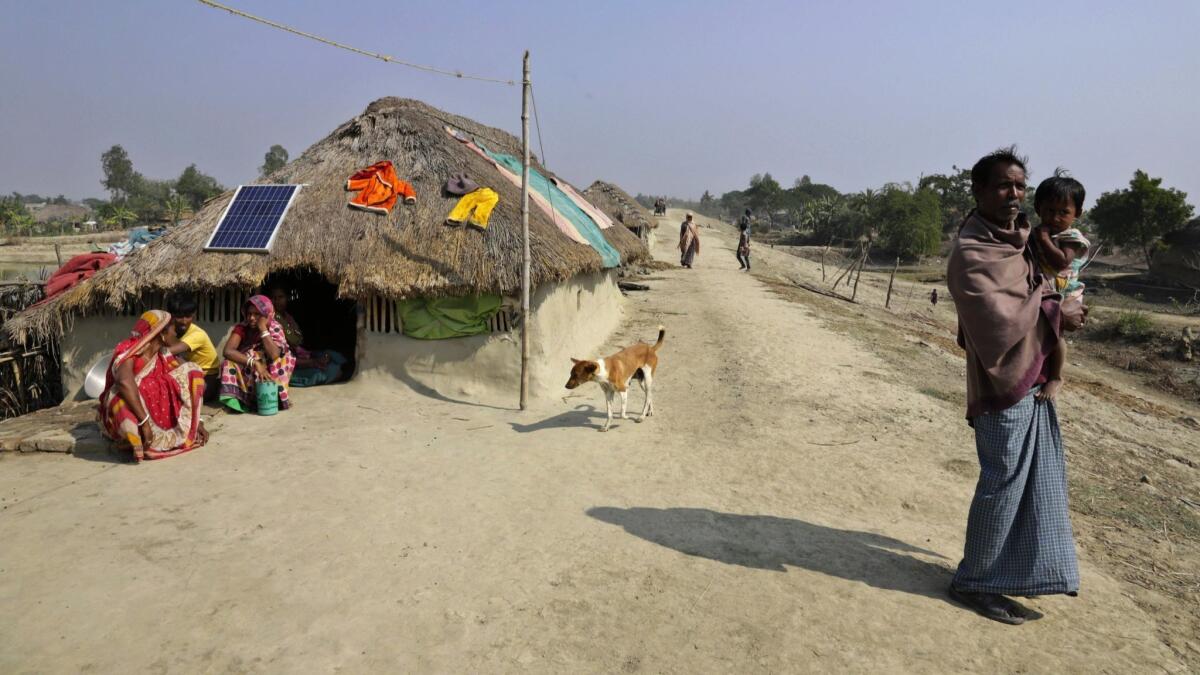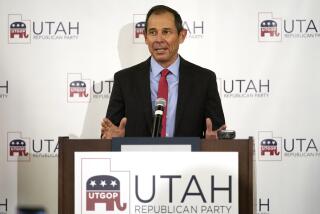Climate change swells ranks of refugees as Trump administration retreats to the sidelines

From African farms shriveled into desert to monster storms revved up by warmer air over the oceans, climate change is stoking environmental disasters around the globe and uprooting millions of people a year — adding to a refugee crisis said to be the worst since World War II.
The increasingly extreme weather patterns have destroyed food and water supplies, left communities destitute, strained national and international aid resources, and fomented political instability in fragile societies in Africa, the Middle East, Asia and Latin America, according to development experts.
“Climate change is the force multiplier for chronic social and environmental problems,” said Tim Ash Vie of the Climate Group, an advocacy organization working to counter global warming.
The hazards of global warming will be the focus of high-profile conferences, protests and other events on the margins of the annual United Nations General Assembly meeting this week in New York, echoing some of the features of the Global Climate Action Summit earlier this month in San Francisco.
President Trump is scheduled to address the U.N. on Tuesday. But he has dismissed the science behind climate change as a hoax and pulled the United States out of the 2015 Paris climate accord, which seeks to lower carbon emissions that are linked to global warming.
The Trump administration also has drastically cut the number of vetted refugees fleeing wars and persecution that it will accept into the U.S. Last week, it moved to cap the total next year at 30,000, the lowest since the refugee program was created in 1980.
The plight of those forced from their homes by the changing environment has been overshadowed by the estimated 65 million refugees now surging around the globe, the most in decades. Unlike them, people displaced by environmental changes are not recognized as refugees under international law.
The 1951 Refugee Convention, which grew out of World War II and was ratified by 145 countries, predated modern environmental science. In recent decades, climate scientists have concluded that the planet is warming due to human activities, causing a mix of effects.
A warming polar cap has opened new fishing and shipping routes in the northern oceans, while greater rainfall and longer growing seasons have improved crop yields in some areas. But hurricanes in the Atlantic and typhoons in the Pacific have steadily worsened, causing devastation from North Carolina to China.
In the developing world, so-called climate refugees are often swept into the ranks of economic migrants by unwelcoming, overtaxed governments — as happened with thousands of sub-Saharan and central African men and women who crossed the Mediterranean Sea to reach southern Europe.
While some migrants were looking for better jobs, other families had fled because drought or torrential rains had destroyed their homes and livelihoods.
An estimated 20 million people are uprooted annually by environmental conditions, according to Alice Thomas, who heads the climate displacement program at Refugees International, a humanitarian and advocacy group.
The total includes victims of some disasters, like earthquakes, that are unrelated to climate, but Thomas said the intensity and frequency of giant storms and droughts is a leading cause of the migration.
“Weather is changing more quickly than we expected, and it will accelerate,” she said. “More and more, climate change will become the primary driver for distress migration. It undermines sustained development and the livelihoods so many have relied on for centuries or longer.”
Climate change is driving migration, which in turn can result in violence and instability, said Nancy Lindborg, the president of the U.S. Institute of Peace, who has worked extensively on development and democracy issues in Africa. “It has become a nasty cocktail,” she added.
In addition to those who cross borders, as many as 140 million people could be displaced within their own countries by 2050, a recent World Bank study concludes.
U.N. Secretary-General Antonio Guterres has labeled climate change the most dangerous threat confronting the world. The U.N. environmental program contends that global warming is redrawing the map of where people can live on the planet.
In 2016, the U.N. agreed to establish guidelines on how to deal with climate refugees, among others, to provide protection, access to schooling and other opportunities. After two years of consultation and drafts, the countries are scheduled to ratify the Global Compact for Safe, Orderly and Regular Migration in December.
Only one country has dropped out of the process so far — the U.S. under Trump. Hungary, where a right-wing backlash against immigrants is surging, has indicated it will also withdraw.
The Trump administration has downgraded the issue of climate change and even removed the term from some official documents. Though some administration officials acknowledge climate change is real, they dispute that human activity is causing it.
Scientists and activists paint an alarming portrait of the consequences of extreme weather worldwide.
In Africa, herders and farmers are fighting as Lake Chad evaporates, while drought has nearly wiped out Zimbabwe’s staple crop, maize. In India, rains flooded Kerala state at record levels, while rising seas in are nipping away at low-lying islands in the central Pacific.
“The perception is changing quite fast,” Elizabeth Sellwood, an expert at the U.N. Environment Program, said in a telephone interview from Nairobi, Kenya. “There is growing realization that climate change is not just an environmental issue but a security issue.”
Even in the United States, where families displaced by disasters are not considered refugees, thousands of people have lost homes to wildfires on the West Coast and flooding on the East Coast, all apparently exacerbated by climate change.
Hurricane Florence, which hit the Carolinas this month and killed at least 43 people, carried 50% more water than previous storms because of warmer sea surface temperatures, according to a new study by researchers at Stony Brook University and the Lawrence Berkeley National Laboratory.
In Alaska, some native fishing villages are threatened by melting permafrost. Although relatively few people are affected, the villages represent unique native cultures, said Joel Clement, a former Interior Department official who will take over an Arctic policy program at Harvard University.
“No human has ever experienced the rate of change in the Arctic that we are seeing now,” Clement said. As ice disappears, he said, brutal storms roar in from the Bering Sea and chew away at already shrinking land “meters at a time.”
Twitter: @TracyKWilkinson
More to Read
Start your day right
Sign up for Essential California for news, features and recommendations from the L.A. Times and beyond in your inbox six days a week.
You may occasionally receive promotional content from the Los Angeles Times.







